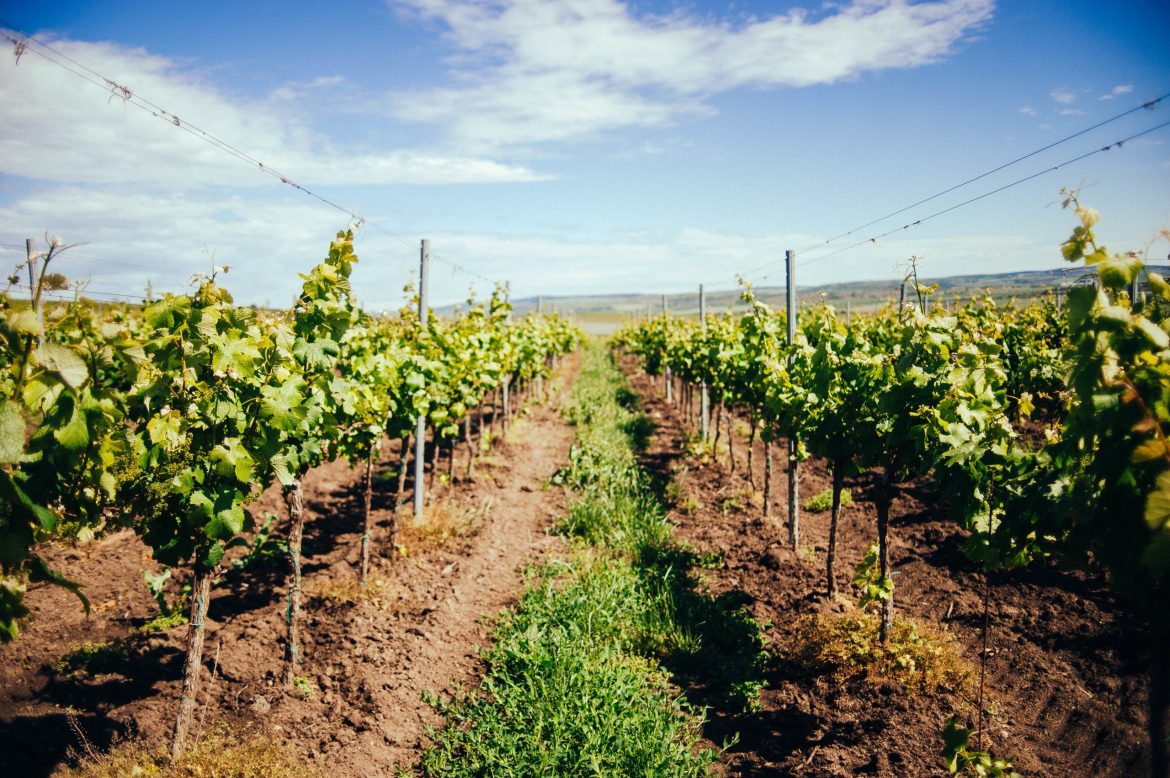Region of Dobrogea, Sands and Danube Terraces is located in southeastern Romania and stretches between the Danube and the Black Sea, bordered by the Macin Mountains. With areas of podis and alluvial hills, Dobrogea is a treasure trove of microclimates, hence the multitude of designations of origin that define the particularities of each geographical indication. The Danube-Black Sea canal brings to the vineyards of the microterrain the particularity of a riparian sub-climate.
Main varieties
White: Aligoté, Chardonnay, Cramposie, Feteasca alba, Feteasca regala, Muscat Ottonel, Pinot gris, Riesling de Rhin, Italian Riesling, Rkatiteli, Sauvignon, Tamaioasa romaneasca, Traminer rose
Black: Black beetle , Burgundy, Cabernet franc, Cabernet Sauvignon, Blackcurrant, Mamaia, Merlot, Pinot noir, Syrah
Geographical indications
- PDO Adamclisi
- D.O.P. Babadag
- PDO Murfatlar
- PDO Oltina
- D.O.P. Sarica Niculitel
- Insuratei PDO
- I.G.P. Dobrogea Hills
- I.G.P. Danube Terraces
History
Archaeological discoveries in the fortress of Histria [2] (today Istria) have revealed, under the floor of a funerary monument dated to the beginning of our era, amphorae in which wine for offerings was kept. On 13 February 2007 Histria Fortress was officially inscribed on the European Heritage List. There are documents that show that in the years 1760-1770, Polish merchants came and bought wine from Dobrogea and transported it on the Danube by ships that loaded at Isaccea. According to an old statistic, in 1903, the North-Dubrovnik county alone owned an area of 5,800 hectares of vineyards (Sarica-Niculitel vineyard) and produced about 305,000 hectolitres of wine annually.
Terroir
Relief: The North-Dobrogene vineyards are located in wide amphitheatres, with openings towards the Danube valley. Viticulture in this area is organised around the Niculițel hills and the Macin Mountains – remnants of the ancient Hercynian mountain range – the oldest mountain range in Europe; in the centre and south of the region, the hills may have all the possibilities of exhibitionbecause panthele are line and sunny plateaus prevail; Altitude: 100-200 m; Soil [1]: gleic and cambic cernozite, kastanozite, alluvium, regolith, lithosol, loess and mollisol; Multiannual average temperature: 10,7-11,1oC; Precipitation: 400-454 mm multi-year average; Over 30 of tropical days annually in Dobrogea and more than 50 tropical days per year in the area of the Danube sands and terraces; Ierni moderate (21-30 days annually). 2200 – 2311 hours of sunshine annual. About 80-100 days with frostbite the ground. Extreme weather eventsare late frosts, hail and thunderstorms. Fog is persistent in the mornings, in the autumn months, in areas near the Danube and the Danube-Black Sea Canal. Of the varieties Chardonnay, Muscat Ottonel, Pinot gris, Pinot noir, Tamaioasa romaneasca and Traminer pink In good years, sweet, precious wines are obtained from grapes picked when the grapes are ripe and botrytised.
Sources:
- Toti, M.; Dumitru, Sorina; Vlad, V.; Eftene, Alina – Pedological atlas of Romanian vineyards (2017), Ed. Terra Nostra, Iasi
- https://ro.wikipedia.org/wiki/Histria
- www.onvpv.ro



